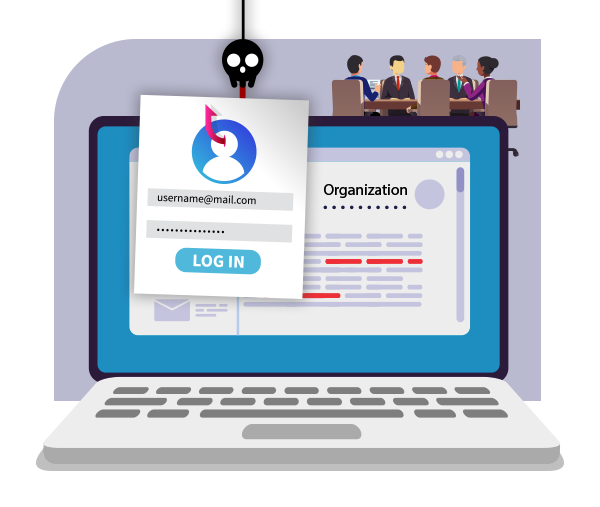Social Engineering
Organizations are under cyber threat from threat actors including cyber criminals, hacktivists and nation state agents. While all organizations should have strong defences that help prevent cyber attacks, threat actors have tactics, techniques and procedures designed to evade these defences. A primary method of attack uses social engineering.

What is social engineering?
Social engineering is the use of deception to exploit human nature, our habits and our trust in order to gain information or access information systems. Threat actors attempt to drive desired behaviour through fear including fear of missing out, intimidation, coercion, urgency, opportunity or even befriending the user.
Information sought by threat actors can include:
- Confidential information, such as passwords and login credentials
- Personal information, such as bank information
Phishing

Phishing is the most common form of social engineering attack.
Phishing occurs when a threat actor impersonates a trusted entity through email to try and fraudulently obtain personal information, financial information or access to systems. The email prompts the targeted individual to act. The action could be to click on a link, provide information, open an attachment, download a file, or provide remote access to a workstation. This action provides the threat actor with information or access to a system.
Phishing uses email to solicit your information by posing as a trustworthy person or entity. For example, the threat actor may send emails disguised as your boss or a financial institution requesting your account information.
The threat actor will use this information to gain access to your online accounts. Once the threat actor has access to your accounts, they may use this access to carry out a larger cyber attack.
Smishing

Smishing is a form of phishing that uses text messages instead of email. Although smishing is also known as SMS phishing, the messages can arrive by SMS (short message service), iMessage, Facebook Messenger, WhatsApp, and other messaging platforms.
This type of attack is a common form of social engineering. The threat actor poses as a trustworthy person or entity in messages designed to acquire sensitive information. Smishing scams typically use a prompt such as a threat or opportunity designed to deceive you into clicking a link or calling a number.

Vishing
Vishing is a form of phishing that uses phone calls instead of email. Vishing is also called voice phishing.
Vishing occurs when a threat actor impersonates a trusted entity over the phone to fraudulently obtain sensitive information or access to systems. Threat actors disguise their phone number to make it look as though they are calling from a legitimate institution.
The caller uses fear to prompt the targeted individual to act. The desired action could be to obtain sensitive personal information, induce you to send money, or provide access your organization either knowingly or unwittingly.
Pharming

Pharming is a type of phishing that directs targets to a fake website without requiring them to click on a malicious link. The term pharming is combination of farming and phishing. It is also known as phishing without a lure.


